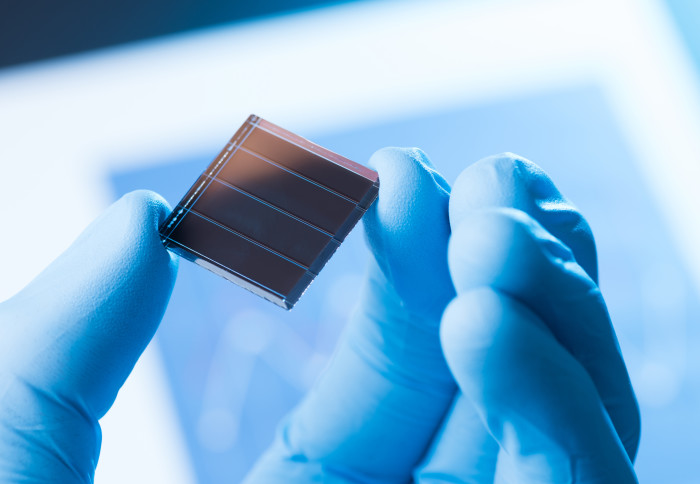Ultrafast lasers used to probe next-generation solar cells

Researchers have tracked the first fractions of a second after light strikes solar cells, providing insights into how they produce electricity.
Probing the very first moments of the process of converting light into electricity could help researchers improve new solar cells, allowing them to produce energy more efficiently.
This work demonstrates the power of our new time-resolved x-ray technique, which can now be applied to a wider range of materials. Professor Jon Marangos
The method, developed by Imperial College London researchers, uses ultrafast lasers and x-rays to provoke a reaction and then to measure the changes it causes over just femtoseconds (quadrillionths of a second).
Now, a team of researchers at Imperial and Newcastle University has used the technique to study organic photovoltaic (OPV) materials that harvest the Sun’s rays to produce energy or to split water.
OPV materials are under intense study as they can provide cheaper renewable energy. However, many of the materials currently used are unstable or inefficient, due to the complex interaction of electrons that are excited by light.
Closer study of the fast interactions of these electrons, like the paper published today in Nature Communications that combines fast time resolution with measurements localised to atoms, provide valuable insights into methods for improving solar cells and catalysts.
More efficient devices
Professor Jon Marangos, from the Department of Physics at Imperial, said: “OPVs are cheap and flexible alternatives to silicon-based photovoltaics, and so are an attractive prospect for use in future solar energy generation infrastructure.
“This work demonstrates the power of our new time-resolved x-ray technique, which can now be applied to a wider range of materials and may provide the understanding needed for making more efficient OPV devices.”
The team probed the first step of solar energy conversion – the reactions in the material caused by the striking of light. They first fired a laser pulse lasting 15 femtoseconds at the material to excite the reaction. They followed this with an x-ray pulse lasting just attoseconds (less than millionths of a billionth of a second), which measured the resultant changes in the material.
Rapidly evolving states
The team observed, for the first time, direct x-ray signatures of the initial state of the material when electrons are knocked out of position. This creates an electron and ‘hole’ pair, that can move through the material.
This initial state rapidly evolved into a new, more stable state in just 50 femtoseconds. Calculations by Professor Tom Penfold at Newcastle University agreed well with the observations, showing the initial state depended on the distance between chains of molecules in the material.
Dr Artem Bakulin, from the Department of Chemistry at Imperial, said: “This sensitivity of the time-resolved x-ray method to the initial electron dynamics occurring directly after excitation by light paves the way for new insights into the photophysics of a wide range of organic optoelectronic and other materials.”
The team now plan to explore the ultrafast charge dynamics in other organic semiconductor materials, including recently discovered materials that use different molecules as electron acceptors, which show enhanced OPV efficiency.
-
‘Direct observation of ultrafast exciton localization in an organic semiconductor with soft X-ray transient absorption spectroscopy’ by D. Garratt et al. is published in Nature Communications.
Article supporters
Article text (excluding photos or graphics) © Imperial College London.
Photos and graphics subject to third party copyright used with permission or © Imperial College London.
Reporter
Hayley Dunning
Communications Division